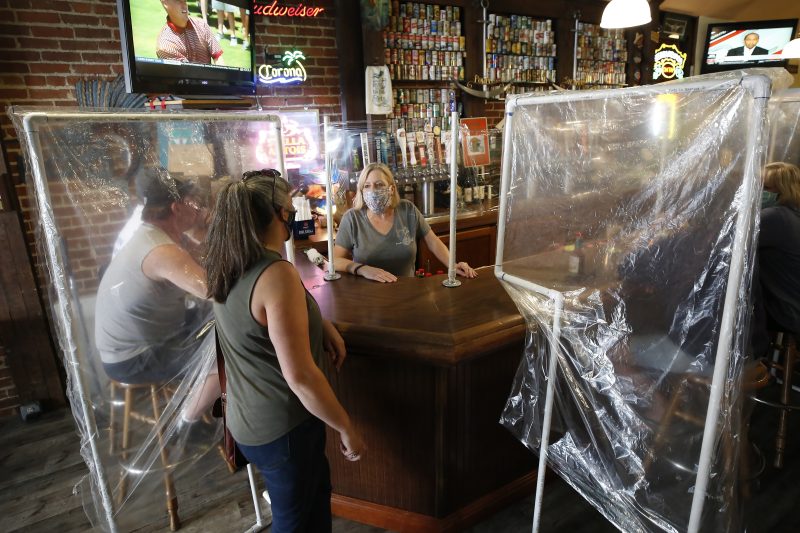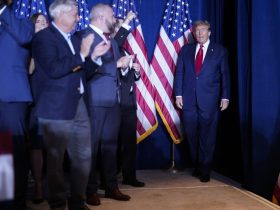When the novel coronavirus first appeared in the United States in early 2020, experts — both medical and political — had little information about how best to handle it. It seemed, based on preliminary and ultimately inaccurate information, to spread through contact, meaning that the focus became hand-washing and Clorox wipes instead of covering one’s mouth. There was, however, full understanding of that lack of certainty, meaning that authorities tended to err on the side of caution to keep the virus as contained as possible and limit its damage.
What followed the virus’s arrival, then, was an ad hoc effort to restrict person-to-person interactions as much as possible. Bans on large gatherings were implemented and recommendations were made to remain at home as much as possible, with compliance voluntary. The hard-and-fast prohibitions centered on places where people might tend to congregate, such as bars and schools. It was a restriction of options more than a restriction of activity.
This was appreciably different from what had already been underway in China. There, movement was at times restricted entirely, as the autocratic government sought to stamp out transmission of the virus in one fell swoop. First the city of Wuhan, where the virus originated, then other cities as cases emerged. These were “lockdowns” in an often literal sense: people forced into place in an effort to halt the virus. When looser rules arrived in the United States months later, the same term was often applied by Americans to a very different process.
The effects of that have lingered. Over the past three years, the idea that the United States had a system of “lockdowns” has persisted, and an array of responses to the virus has been loosely grouped under that umbrella: remote schooling, restaurant closings, restrictions on entering facilities. Some of the closures and limits arguably or demonstrably incurred more cost than the value they offered, but none were “lockdowns” in the Wuhan sense.
Democratic leaders and locations moved first to impose restrictions — in part because the virus first spread widely in Democratic places. But soon President Donald Trump and Republican leaders joined the push to impose limits on person-to-person contact. The White House announced a national emergency on March 13, 2020, and, a few days later, guidelines aimed at limiting in-person interactions. Other officials took the same steps: On March 17, for example, Florida Gov. Ron DeSantis (R) announced the closure of bars and restaurants for 30 days.
The era of collective, bipartisan interest in stopping the spread (as the vernacular had it) was short-lived. The economy was understandably hammered by closures of businesses and schools. Trump, with an eye on his upcoming reelection, turned against widespread shutdowns fairly quickly, suggesting that maybe by Easter — April 12, 2020 — things could be close enough to normal that churches could be filled once again. He and his advisers revised downward their recommendations for states to reopen (another bit of vernacular conflating the specific closures with a state’s status), and then Trump quickly demanded that states get back to normal regardless.
People in a number of states began protesting pandemic rules. Trump, eager to see the economy rebound completely, offered his approval. At first, most Americans disagreed with Trump’s encouragement of the protests, but a line had been crossed. Particularly as the year wound on and the pandemic continued to depress Trump’s poll numbers, the political right cast overbearing government officials as a threat to individual liberty and characterized the “lockdowns” — by now seemingly meaning nearly any covid-19 response unpopular on the right — as the embodiment of the threat.
It’s certainly true that Republican officials (and Republicans) have consistently been less fervent about coronavirus responses than Democratic officials (and Democrats). The partisanship of the pandemic is broad and well-documented. But the idea that Democrats enacted “lockdowns” or seek new “lockdowns” persists not because there have been calls even to introduce new limits on in-person interaction. Rather, it endures because it is politically useful to suggest that Democrats want to do so — since using “lockdown” as a synonym for “government forcing you to do something” plays into long-standing Republican rhetoric.
pic.twitter.com/yhEOieaGER
— Elon Musk (@elonmusk) December 11, 2022
As the 2020 election approached, Trump’s White House was touting his successes, including that he had managed to save lives during the pandemic “while ending harmful lockdowns.” DeSantis began promoting “Don’t Fauci my Florida” gear on his campaign website, picking up on Trump’s scapegoating of the country’s top infectious-disease doctor, Anthony S. Fauci, as a way of demonstrating opposition to efforts to contain the virus. These were pivots away from their embrace of early measures to slow the virus’s spread, measures that had both become unpopular with Republican voters — thanks largely to Trump’s election-trail rhetoric — and that had often been exaggerated for effect.
The Biden White House has been asked repeatedly whether President Biden supports “lockdowns.” In February, for example, a reporter asked press secretary Jen Psaki about the idea.
“The president has been clear we’re not pushing lockdowns; we’ve not been pro-lockdown,” she replied. “That has not been his agenda. Most of the lockdowns actually happened under the previous president.”
It’s probably not helpful for the administration to conflate what happened in 2020 with “lockdowns,” given that, more recently, the current press secretary was asked for a White House response to protests against China’s very different lockdowns. But it also probably doesn’t matter. That Biden has pushed Americans — with decreasing force as time goes on — to take steps to combat the virus means that he, not Trump, is seen by much of the country as the lockdown president and his party as the lockdown party.
More because that perception is useful to Biden’s opponents than because it’s accurate. Because, in short, it fits into the long-standing frame of Democrats as the party of big government intrusion and Republicans as the party of do-what-you-want.
And that’s also why it’s likely to stick.








